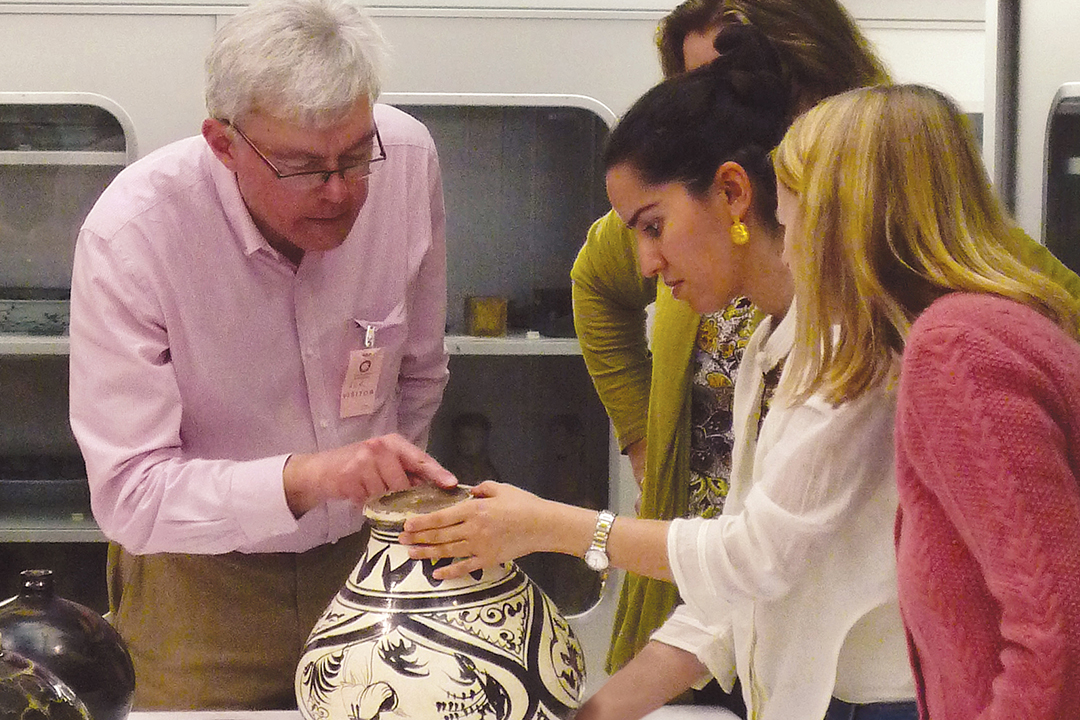Jennifer Hackney was a set decoration buyer for big budget movies like Steven Spielberg’s Lincoln and Captain Phillips with Tom Hanks. But as she logged 12-hour days searching thrift shops and auction houses for an authentic 1860s armoire to decorate Lincoln’s bedroom, she daydreamed about going back to school to be a design historian.
Now, as a student in the new graduate program in decorative arts and design history—launched through a partnership between Columbian College’s Corcoran School of the Arts and Design and the Smithsonian Institution—she’s preparing for a second career while having the opportunity to work hands-on with museum artifacts.
“To work with a collection the caliber of the Smithsonian is a pretty amazing thing,” said Corcoran Director Sanjit Sethi, who noted that students also have access to items from venues like the Library of Congress and private collections throughout the D.C.-region. “There's a resurgent interest in crafting objects and decorative arts. This program complements our wonderful track record with our master’s programs in art history and museum studies of addressing growing areas of scholarship.”
“Between our expert faculty and the partnership with the Smithsonian, our students have unparalleled access to collections, curators and internships that it is very hard to find anywhere else,” added Elizabeth Deans, the program’s director and an assistant professor of decorative arts and design history.
With classes that range from the History and Theory of the Home to surveys of furniture, ceramics and textiles, the program primarily prepares students for professional careers in museums. But while many students see the degree as a path to curatorial work, the professional opportunities for graduates include work in historic preservation, art fraud investigations and art authentication. “We are building their repertoire as kind of a connoisseurship in order to prepare them as experts in different materials and media,” Deans said.
The program’s students at the Smithsonian American Art Museum's Luce Foundation Center observing an installation of John La Farge stained glass.
Like Hackney, the program’s students hail from varied academic and professional backgrounds and have wide-ranging aspirations. Greg Bingham had a 25-year career as an accountant before he enrolled in the program in hope of landing a position as an appraiser. Shannon Gray holds undergraduate degrees in psychology and business administration, but aspires to work in auction houses. “I feel like I’m getting a foundation in both the business side of decorative arts and the historical side,” she said.
For most students, access to the Smithsonian resources and collections remains the program’s primary attraction. Classes are taught at the Smithsonian’s S. Dillon Ripley Center and the institution’s curators, scholars and historians regularly serve as guest speakers. Hackney has conducted hands-on examinations of fore-edge paintings printed on 16th century books at the American History Museum and 19th century furniture at the Smithsonian’s storage facility in Suitland, Md., neither of which are readily available to the general public. The program has also led her to a internship at the U.S. Holocaust Memorial Museum.
“I feel like I’m straddling several worlds—some art history, some museum studies, some professional development and, of course, a lot of unfettered access to some really rare collections,” Hackney said. “This is the type of experience that can change your life.”
cript>



